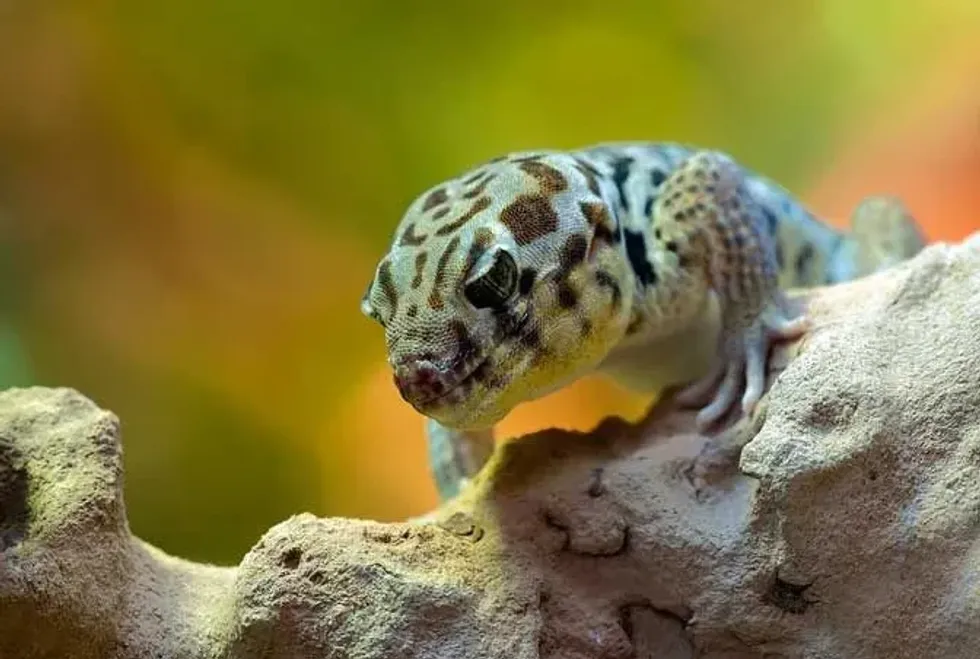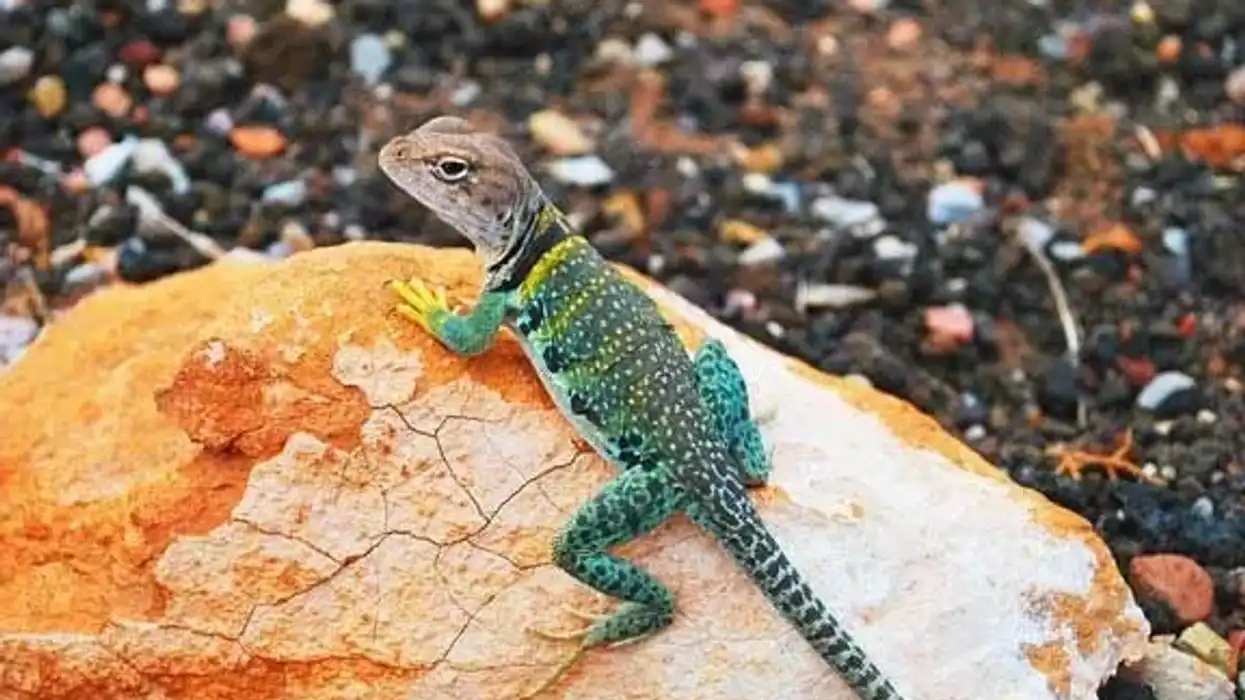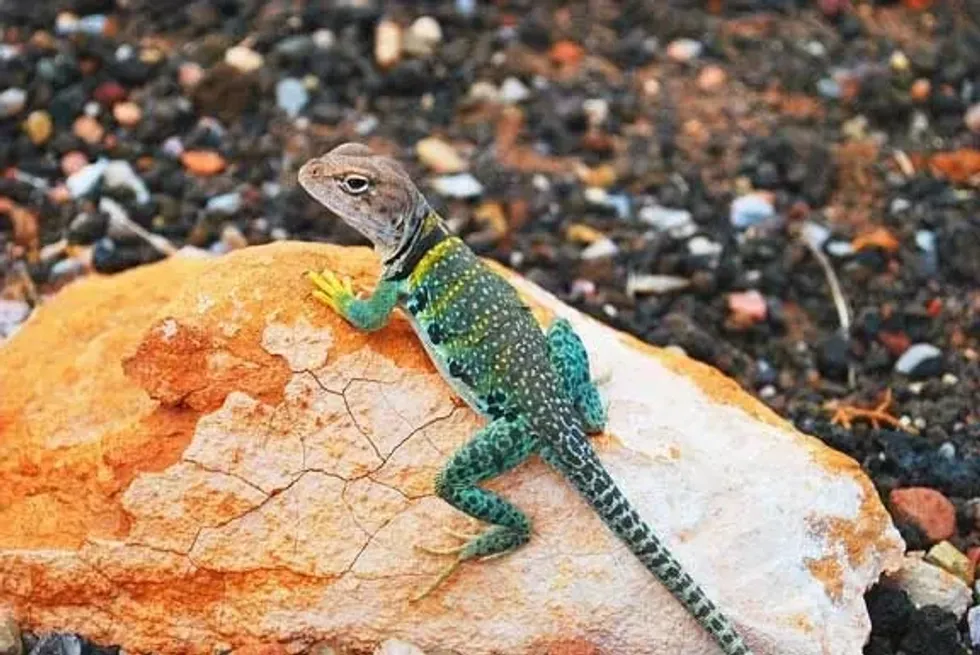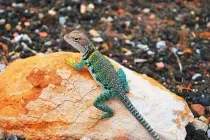Fun Gecko Facts For Kids
Content
- What type of animal is a gecko?
- What class of animal does a gecko belong to?
- How many geckos are there in the world?
- Where does a gecko live?
- What is a gecko's habitat?
- Who do geckos live with?
- How long does a gecko live?
- How do they reproduce?
- What is their conservation status?
- What do geckos look like?
- How cute are they?
- How do they communicate?
- How big is a gecko?
- How fast can a gecko move?
- How much does a gecko weigh?
- What are the male and female names of the species?
- What would you call a baby gecko?
- What do they eat?
- Are they poisonous?
- Would they make a good pet?
- Did you know...
- Different types of geckos
- What are geckos a sign of?
Geckos are reptiles found all over the world except Antarctica. They belong to a different genus and a large variety of species. These colorful lizards are well adapted to different habitats from deserts, mountains, to cold boreal forests. Geckos differ in size and color.
They are all nocturnal lizards mostly thriving in warmer regions. These creatures are unique among all lizards due to their vocalization. All species of geckos have different color adaptations to camouflage in their particular habitats and unique feet to climb vertical surfaces.
Commonly geckos eat small insects like cockroaches, beetles, butterflies, crickets, and millipedes. Some of the larger geckos like the Caledonian gecko also eat small lizards, mice, eggs, and tiny birds.
The leopard gecko and crested gecko are the most loved reptile pets and feed on insects and fruits. In many countries, several species of geckos are sold in pet stores.
Geckos are ancient animals. They have existed for around 300 million years. The common gecko is believed to have its origin in North Africa.
For more relatable content, check out these golden-tailed gecko facts and marine iguana facts for kids.
Gecko Interesting Facts
What type of animal is a gecko?
Geckos, suborder Gekkota, are lizards. There are more than 1,800 species of geckos in the world.
What class of animal does a gecko belong to?
Geckos are reptiles. Most geckos are nocturnal but some species of geckos are also active during the day. Geckos belong to seven families – Sphaerodactylidae, Carphodactylidae, Eublepharidae, Gekkonidae, Diplodactylidae, Phyllodactylidae, and Pygopodidae.
How many geckos are there in the world?
It is believed that there are about 2,000 gecko species. They are found in huge numbers in most places of the world, mostly in warmer regions where the average temperature is 72 degrees Fahrenheit (22.2 degrees Celsius) or more.
Where does a gecko live?
Geckos thrive almost in all habitats other than Antarctica. Warmer climates, the rain forests, mountains, and deserts, are their favorite. Every species have adaptation features to avoid predators and to cope with the weather and their surroundings. These colorful lizards have different colors starting from dull sandy hues to bright greens and blues that act as camouflage.
The Northland tree gecko found in New Zealand’s forests has a green and white spotted body that keeps it hidden in dense vegetation. It is one of the rarest geckos.
The leopard gecko has a yellowish skin with black spots to camouflage well in the rocky and dry grassland. They are adapted to the warm and dry climate of the sandy semi-desert terrain of Iran, Pakistan, India, and Afghanistan.
The arboreal, red-spotted tokay gecko species native to Asia and some Pacific islands are known for their strong bite and unique look. The black-spotted tokay gecko is found in rockier terrains of China and Vietnam.
The gargoyle gecko is found only in the forests of New Caledonia in the South Pacific. Gargoyle geckos have bumps on their heads and make good pets.
What is a gecko's habitat?
Geckos live in forests, mountains, deserts, homes, and even cold mountain slopes. Most of the gecko species live in tropical regions. Some species of geckos mostly love spending their time on the ground and many like to climb to higher grounds and vertical surfaces using their special gripping footpads.
Who do geckos live with?
Geckos are solitary animals. However, some species of geckos like the leopard gecko can live in small groups of a single male and several females. A group of only females may also live together but never two male leopard geckos.
How long does a gecko live?
Different species of geckos have different lifespans. Most geckos live from two to nine years.
A common leopard gecko can live up to 15 years. These reptiles may live for longer in captivity. One of the leopard gecko facts is pet leopard geckos in captivity may live for 15-20 years compared to their approximately five years lifespan in the wild.
How do they reproduce?
The mating ritual of geckos involves attracting a female by vibrating their tails and making unique sounds particular to mating. While most gecko species participate in sexual reproduction, a few species like the mourning gecko reproduce through parthenogenesis. More than 40 species found in New Zealand give birth to baby geckos.
Most geckos lay eggs. Female geckos store their eggs in leaves and twigs. Gestation periods range from around 20 days for a leopard gecko to about three to four years for a harlequin gecko.
A clutch may contain one or two eggs. Eggs are usually laid on the ground hidden under rocks, dry leaves, and tree barks. Eggs typically take 35-90 days to hatch depending on the species.
What is their conservation status?
Because there are many species of geckos, their conservation status differs according to their species. Some are Critically Endangered like the Kalaa striped gecko, Koniambo striped gecko while the large-scaled chameleon gecko is an Endangered species according to the IUCN Red List.
The status of some species is of the Least Concern like the Asia minor thin-toed gecko, forest-spotted gecko, fish-scale gecko, etc.
Gecko predators include snakes, big and medium-size birds like hawks and owls, and a variety of spiders like the goliath tarantula, dogs, and cats.
Gecko Fun Facts
What do geckos look like?
Most geckos are small reptiles. These nocturnal reptiles look different from each other depending on their habitat, environment. Some geckos like the leopard geckos can change their color when they are young.
Most geckos lack eyelids and have a transparent eyelid that they clean with their tongue. The missing eyelids are also a difference that makes them unique lizards. Eighteen species of geckos are known to have eyelids.
Geckos lick their eyelids to clean them, keep them moist and cool. Because geckos do not have eyelids they sleep without shutting their eyes. As an alternative to save their eyes from the strong light, they hide in dark places during the day and save their eyes by contracting them.
Most of these reptiles have a stout body, four well-developed limbs with padded toes, a large head, and well-developed limbs. At the end of each limb are digits or toes that work like adhesive pads when climbing vertical surfaces.
All geckos have fairly long tails. As a defense mechanism, some geckos like the day geckos and the popular pet leopard geckos shed their tails. Geckos shedding their tail, or the ‘tail-drop’ phenomenon happens naturally.
For most geckos, it grows back. As geckos are spread in various habitats ranging from forests to deserts, their colors differ accordingly. They are quite smart to camouflage themselves, this adaptation feature helps the animals to protect themselves from their predators.
Most of the gecko species are from 0.6-23.6 in (1.5-60 cm) long. They have adapted to habitats ranging from deserts to jungles and have body colors to suit their habitat.
Geckos have about a hundred teeth. Their teeth do not wear off as geckos replace their teeth in three to four months. The body of a gecko is covered with skin featuring millions of small hair-like spines. These are soft spines that trap water droplets.
This mechanism saves the gecko’s skin from getting contaminated by dust. A gecko’s toes are covered by microscopic hair called setae. These hairs have the unique function of helping the gecko to climb vertical and plain surfaces.

How cute are they?
Geckos are harmless animals. Some people find them extremely cute and keep them as pets.
How do they communicate?
Geckos can produce different sounds to communicate with their fellow animals. They are known to click, chirp, and even bark.
This is a major difference between a lizard that cannot vocalize and a gecko that can. Geckos may make sounds when they are threatened, to frighten their competitors away from their territory, to attract females. Some gecko species also make sounds to avoid fighting.
Geckos are not very social. These reptiles are solitary animals with a more sophisticated vocal system than all other lizards. These lizards have a true vocal cord. Species like the New Caledonian gecko can even growl and that has earned it the name of ‘the devil in the trees’ in its native island.
A leaf-tailed gecko native to Madagascar screams like a child when in distress. Their tails are also a means to communicate with their fellow creatures.
A slow and gentle wiggling movement may be a sign of indication that they sense another gecko in their surroundings. A fast shaking of their tails can mean aggression or a defensive move to distract or scare a predator.
Shaking the head is a common behavior of many species of geckos while the animals pass their food from their throat to their stomach. Most gecko species are nocturnal meaning they are most active at night looking for food.
They climb with their padded feet, run, and even stomp across shallow water surfaces. The flat-tailed house gecko can move at the speed of 2 mph (3.2 kph).
How big is a gecko?
The Bengal monitor or common Indian monitor ranges from 24-69 in (61-175.3 cm) in length while geckos are 0.6-23.6 in (1.5-60 cm). The longest gecko is only 0.3 times the length of a monitor lizard.
The largest gecko weighs 0.2 lb (90.7 g) and the largest monitor lizard weighs around 200 lb (90.7 kg). The heaviest gecko is 0.001 times the weight of a monitor lizard.
How fast can a gecko move?
A common gecko can run at the speed of 30 mph (48.3 kph).
How much does a gecko weigh?
A mature male gecko weighs around 0.1-0.2 lb (45.4-90.7 g) and a female gecko around 0.1 lb (45.4 g). The weight differs according to the species of gecko.
What are the male and female names of the species?
Male and female geckos do not have any special names.
What would you call a baby gecko?
A newly born gecko is called a hatchling.
What do they eat?
Small insects are the favorite food of geckos. Grasshoppers, flies, spiders, crickets, and small rodents are included in the gecko diet. Pet gecko species also eat store-bought mealworms, fruits like papaya and apricot, and nectar.
Store-bought gecko food often contains a mix of crickets and worms. Different gecko species have different favorites when it comes to food. The leaf-tailed gecko’s favorite is land snails and the New Caledonian gecko eats small insects, small birds, and also some rodents.
Are they poisonous?
The most important thing to know among other common house gecko facts is that these animals are harmless and non-venomous. The common house gecko or wall gecko is a Southeast Asian small lizard.
They are commonly seen in gardens, porches, near lights at night, foraging on insects. Pet geckos in captivity may nip their human handlers if they feel threatened or being handled carelessly.
Would they make a good pet?
Yes, geckos are extremely popular terrarium pets. The most-kept pet gecko species are crested geckos, gargoyle geckos, leopard geckos, ground-dwelling African fat-tailed geckos, and Leachie or New Caledonian giant gecko.
Pet stores provide gecko food, gecko toys, and every gecko essential. Long and shallow terrariums make good homes for geckos. Pet stores are ideal places to shop for gecko terrarium accessories like faux plants and rocks.
Did you know...
Geckos shed their skin like most reptiles. They also shed their spectacle over their eyes. Some studies say they do not have eyelids on their eyes due to this partial shedding phenomenon. In case geckos had eyelids, it could irritate their eyes, or vision impediments while the shedding process.
The world’s smallest gecko and reptile species, the Sphaerodactylus parthenopion is only 1.5 in (3.8 cm) in length.
A gecko’s feet can stick to all surfaces barring Teflon. The setae or tiny hair that help the gecko’s feet to stick to surfaces, are not straight but branch out at slanting angles.
Different types of geckos
There are about 2,000 species of geckos. Some of the most common geckos are tropical house geckos native to South-Central Africa, gargoyle geckos found in New Caledonia, and leopard geckos native to Asia, and the Middle East.
A few uncommon geckos are the psychedelic rock gecko found in Vietnam, the Union Island gecko endemic to the Caribbean, and the marbled gecko native to Australia.
What are geckos a sign of?
In different cultures, geckos represent energy, rebirth, hope, and life cycles. These reptiles also stand for healing and cleaning, and positivity. Some believe that a gecko falling on someone’s head could mean misfortune or even death. However, if the gecko lands on the back of the crown, good fortune awaits!
Here at Kidadl, we have carefully created lots of interesting family-friendly animal facts for everyone to discover! Learn more about some other reptiles from our radiated tortoise facts and caiman lizard facts pages.
You can even occupy yourself at home by coloring in one of our free printable gecko coloring pages.
We Want Your Photos!
More for You
Bachelor of Arts and Law specializing in Political Science and Intellectual Property Rights

Anusuya MukherjeeBachelor of Arts and Law specializing in Political Science and Intellectual Property Rights
With a wealth of international experience spanning Europe, Africa, North America, and the Middle East, Anusuya brings a unique perspective to her work as a Content Assistant and Content Updating Coordinator. She holds a law degree from India and has practiced law in India and Kuwait. Anusuya is a fan of rap music and enjoys a good cup of coffee in her free time. Currently, she is working on her novel, "Mr. Ivory Merchant".
Disclaimer
1) Kidadl is independent and to make our service free to you the reader we are supported by advertising. We hope you love our recommendations for products and services! What we suggest is selected independently by the Kidadl team. If you purchase using the Buy Now button we may earn a small commission. This does not influence our choices. Prices are correct and items are available at the time the article was published but we cannot guarantee that on the time of reading. Please note that Kidadl is a participant in the Amazon Services LLC Associates Program, an affiliate advertising program designed to provide a means for sites to earn advertising fees by advertising and linking to Amazon. We also link to other websites, but are not responsible for their content.
2) At Kidadl, we strive to recommend the very best activities and events. We will always aim to give you accurate information at the date of publication - however, information does change, so it’s important you do your own research, double-check and make the decision that is right for your family. We recognise that not all activities and ideas are appropriate for all children and families or in all circumstances. Our recommended activities are based on age but these are a guide. We recommend that these ideas are used as inspiration, that ideas are undertaken with appropriate adult supervision, and that each adult uses their own discretion and knowledge of their children to consider the safety and suitability. Kidadl cannot accept liability for the execution of these ideas, and parental supervision is advised at all times, as safety is paramount. Anyone using the information provided by Kidadl does so at their own risk and we can not accept liability if things go wrong.
3) Because we are an educational resource, we have quotes and facts about a range of historical and modern figures. We do not endorse the actions of or rhetoric of all the people included in these collections, but we think they are important for growing minds to learn about under the guidance of parents or guardians.







